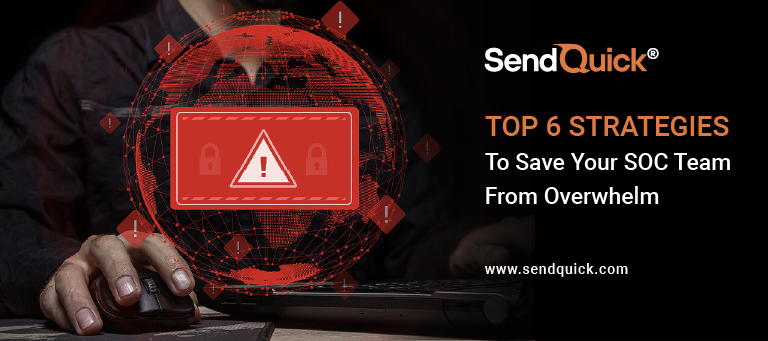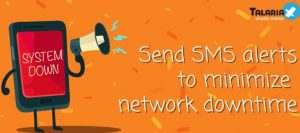Modern organisations are faced with the increasingly difficult task of protecting their broadening digital assets from ever-evolving cybersecurity threats. This situation has led many to adopt highly sensitive alert management systems that signal warning signs upon detecting even the slightest threat. According to a survey of IT leaders, around 70% claimed that the number of security alerts that reach their Security Operations Centre (SOC) has doubled in the last five years. Given that many of these alerts are just false positives, analysts have adopted the bad habit of ignoring them, a phenomenon aptly called alert fatigue. If not addressed, this can result in serious threats slipping unnoticed and causing significant damage to a company’s bottom line and reputation. Strategies that allow sorting through numerous alerts and narrowing down the feasible incidents must be integrated to avoid alert fatigue and prevent disorganisation.
1. Use machine learning to connect the dots
According to a study, the average large business (those with around or over 1,000 employees) maintains approximately 70 security products made by 35 different vendors. One can only imagine how unmanageable the generated alerts would be. Cutting-edge and scalable machine learning algorithms can sort through countless lower-risk alerts about suspicious activity and segregate them into a more manageable compilation of higher-risk incidents. In addition, machine learning can quickly connect the dots between seemingly unlike threat alerts and consolidate incidents by sorting through and reporting high-risk threat signals from various parts of the digital environment. The better this consolidation of information and alerts, the more SOC teams can avoid having to go through numerous alerts and end up with alert fatigue.
2. Compile alert reports to make things easier
As more and more alerts pile up, so do the number of low-fidelity warnings and false positives, which prolongs the process of analysing and resolving critical warnings. Given that most SOC analysts can go through only seven to eight investigations a day, one can see how it is not possible to spare enough time verifying every alert that comes through. As such, generating alert reports is recommended, with each containing the details about each element in the digital environment and their relationship with one another. These reports help analysis teams quickly absorb information in a comprehensive yet concise way and go over a plan to resolve them. For a more seamless reporting process, SOC teams can set certain periods for various alerts and reporting tasks that are not considered critical.
3. Establish alert priority levels
According to a Microsoft study, 44% of security alerts are left uninvestigated due to talent scarcity and the overwhelming number of security solutions generating alerts. Alert fatigue sets in because of habituation, which means the more a person is exposed to something, the easier it becomes for them to be desensitised and ignore it. Furthermore, looking into security alerts is akin to searching for a certain needle in a needle pile, which is undoubtedly mentally exhausting and time-consuming. Highlight priority levels that indicate priority through auditory, visual, and other sensory cues significantly reduce alert fatigue. Lastly, grouping high-risk entities in a watchlist guarantee that high-priority alerts are acted on immediately.
4. Reduce both false positives and false negatives
On average, analysts spend 15% of their working hours probing false positives, which translates to nearly seven hours a week for each one of them. What’s worse is that these hours are not spent on investigating actual threats. Thus, it is best to adopt a solution that collects alerts and logs from all connected data entities that are then analysed and used to construct an approximate behavioural profile for all entities in the organisation. This process greatly cuts down on both false positives and false negatives, as well as reports security-relevant data to boost detection efficiency.
5. Pair alerts with actionable plans
Vague alerts require more attention, time, and focus compared to precise and actionable alerts. Without a doubt, having exhausted employees deal with more of the former is a recipe for disaster. Hence, supplementing alerts with an actionable checklist reduces the number of missed alerts and enhances productivity rather than lowering it. An example of this is in the aviation industry, wherein each alert that pops up on the pilot’s dashboard comes with actionable steps to address the issue.
6. Integrate real-time automation
Automating tedious tasks that do not require human attention profoundly impacts reducing alert noise. By leveraging real-time automation, responders can reduce their workload by fully automating routine responses to recurring alerts. This enables SOC teams to focus better on risk monitoring, analysing trends, and concentrating on distinctive alerts.
Conclusion
After implementing the strategies mentioned, do not forget to periodically review the alerts, processes, and devices used. Doing so maintains the right balance between addressing high-risk alerts and ignoring the false positive ones. As there is ultimately no one-fix solution to alert overwhelm, it is vital to continually work with SOC teams and seek feedback.
Address your business’s alert management issues the right way with SendQuick’s IT alert management platform, where your SOC team can get centralised alerts, receive instant notifications, and act on them anywhere, anytime, and without delay.
More than just a SMS gateway provider, SendQuick has been developing innovative solutions for businesses to unlock their fullest potential. The channels of internal and external communication are greatly simplified with our enterprise mobility services and powerful SMS gateway in Singapore, enabling your business to immediately address the concerns of all stakeholders.
For more information, do not hesitate to get in touch with us today!






